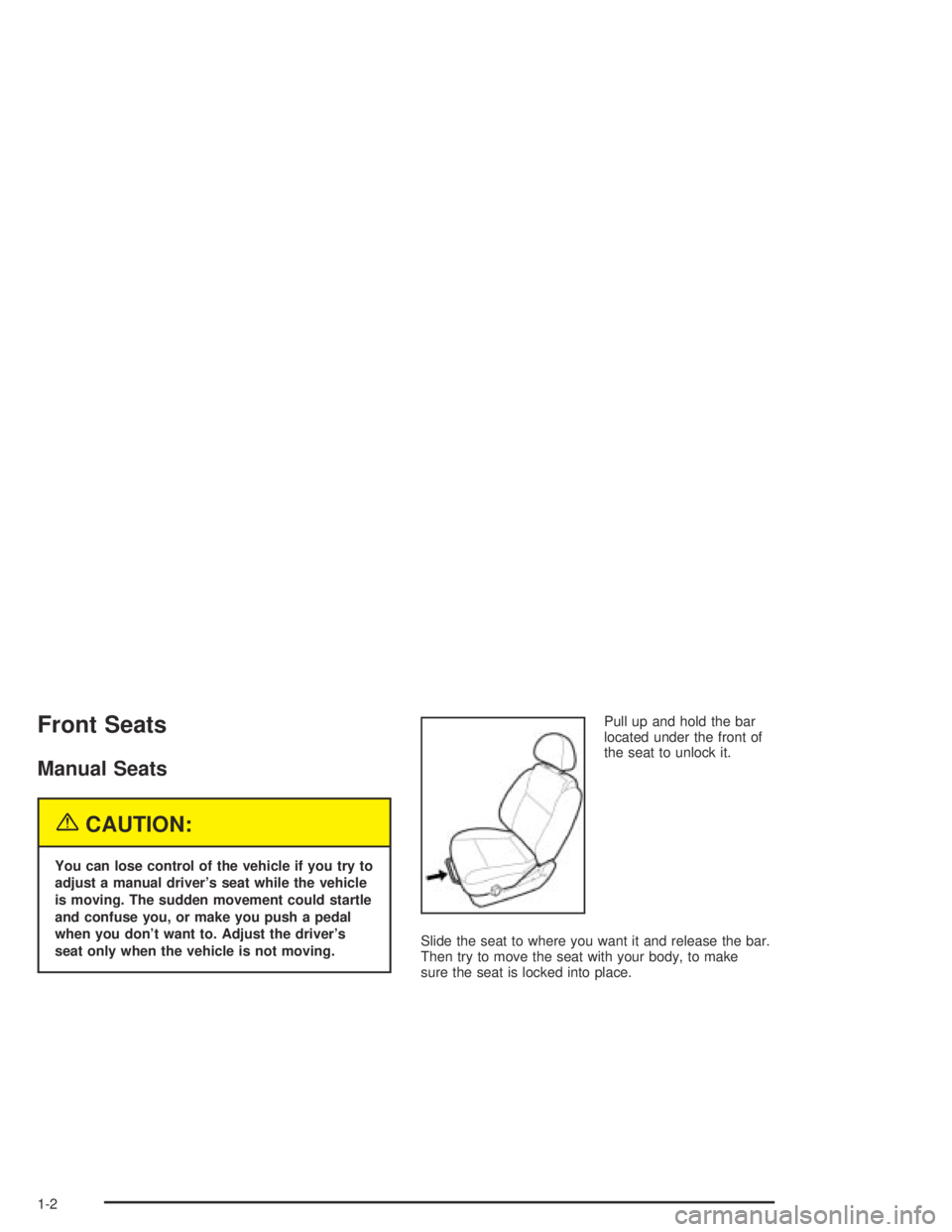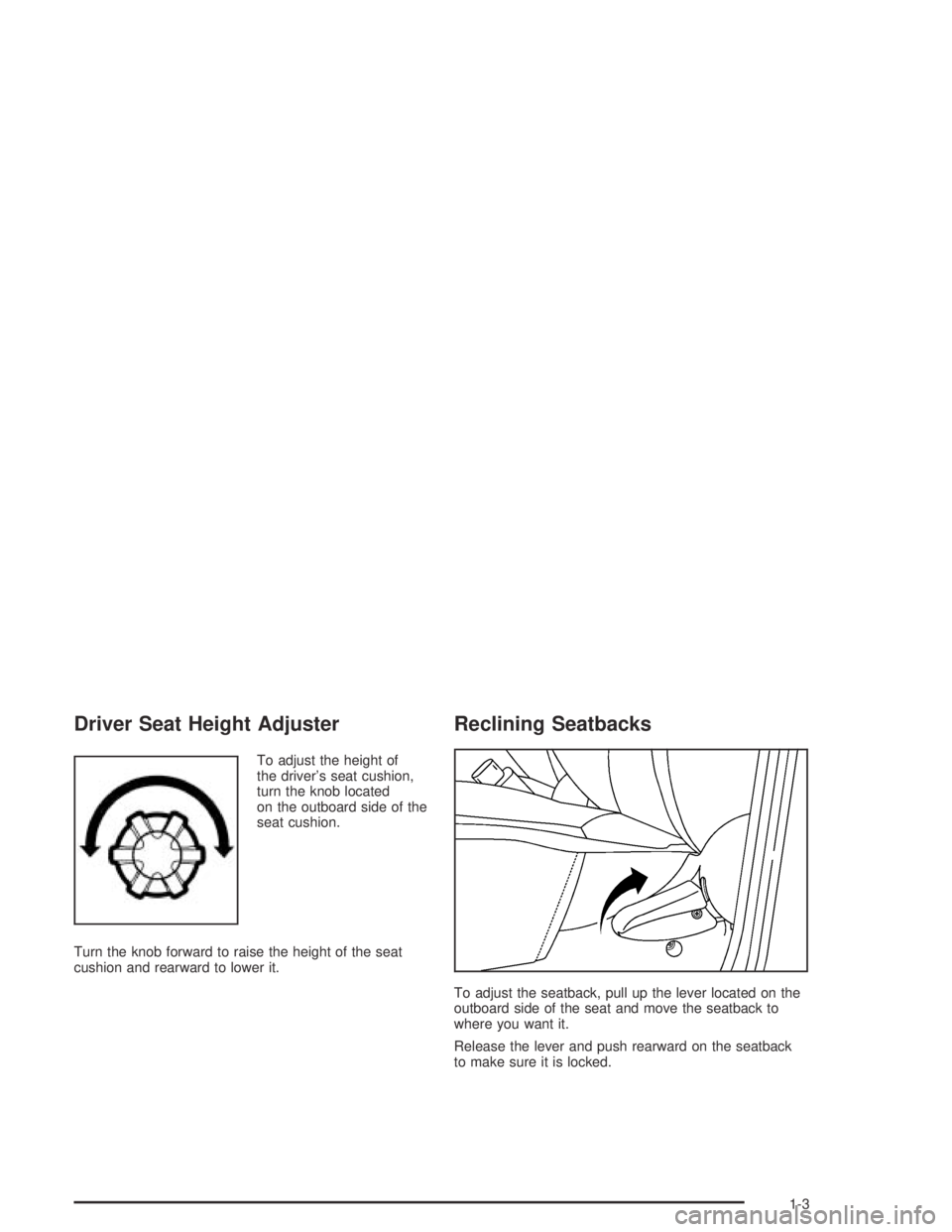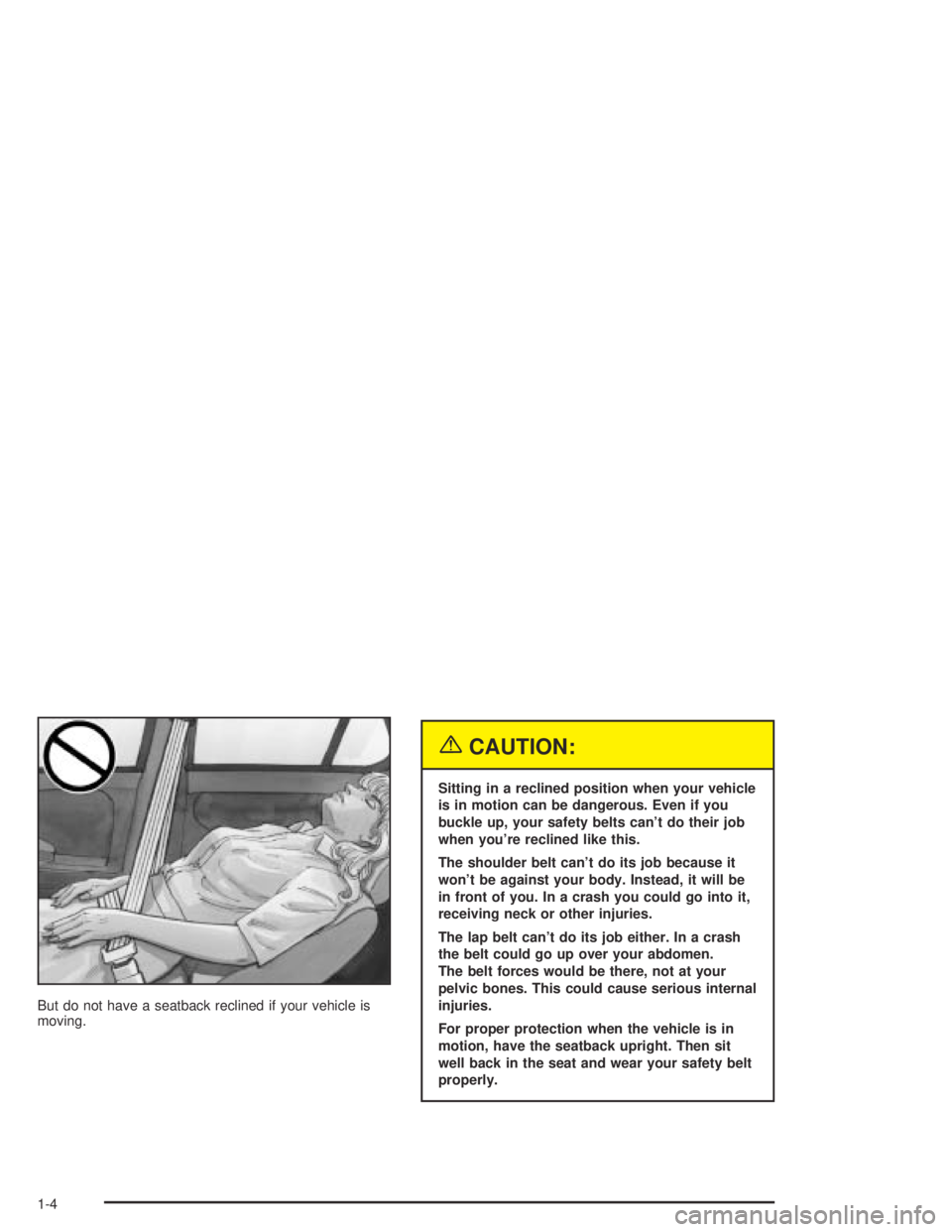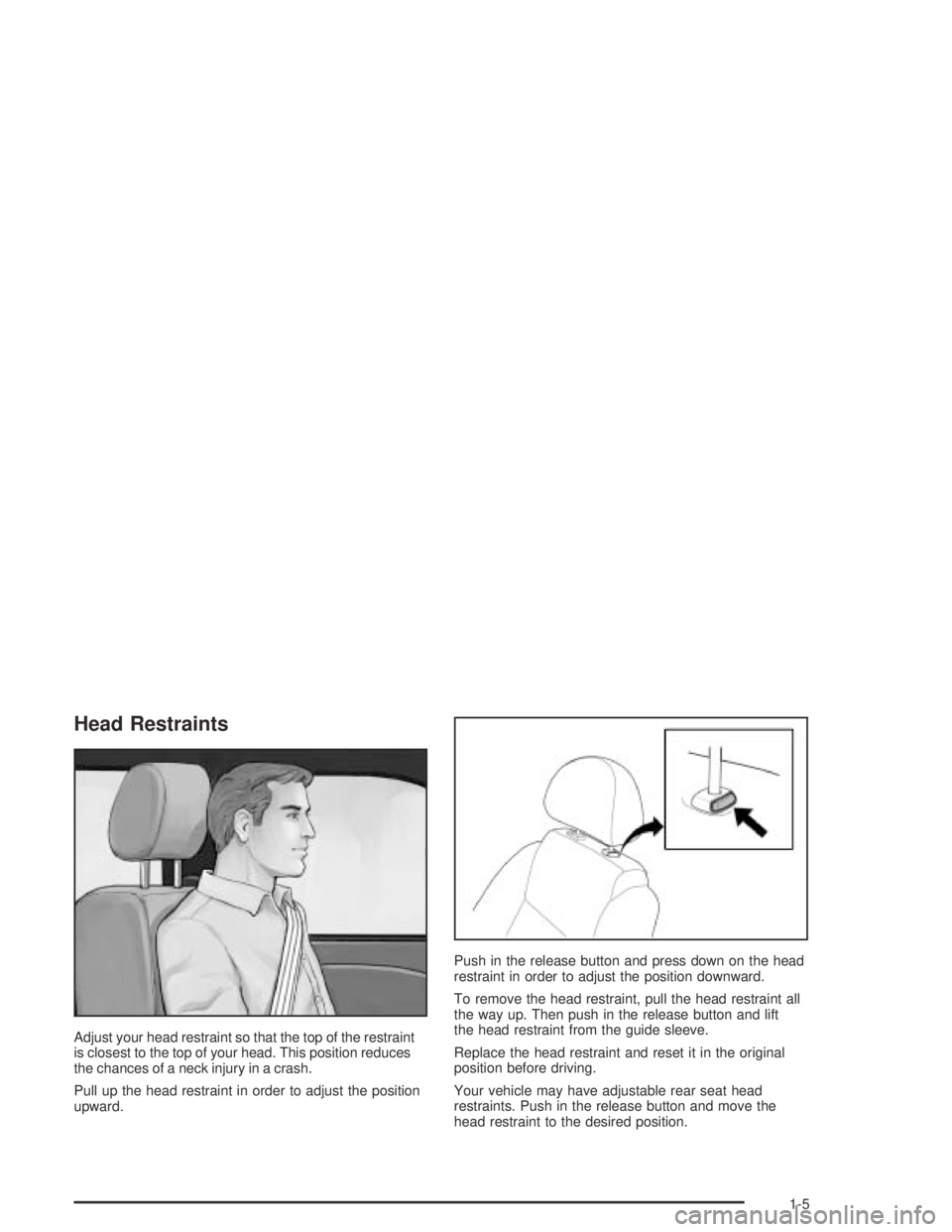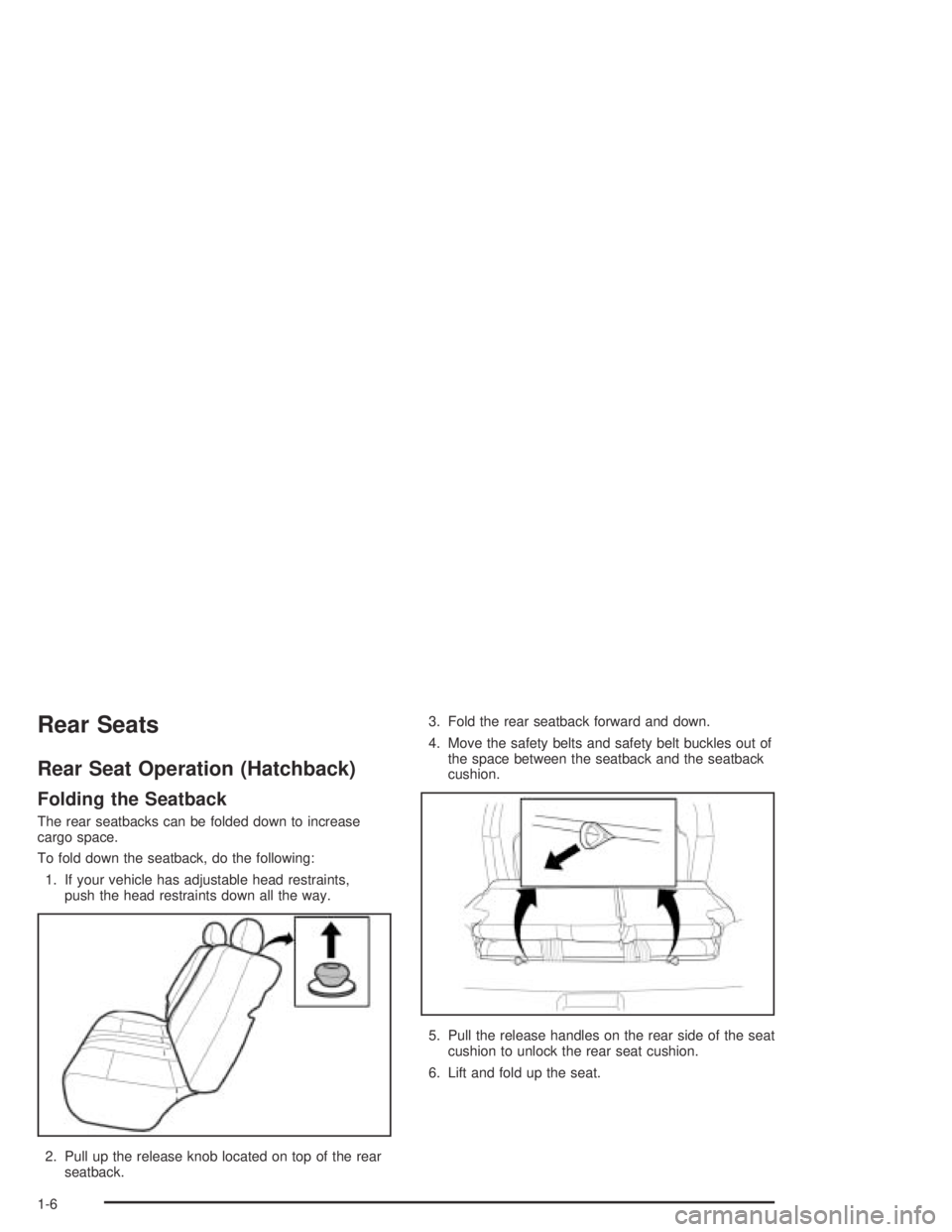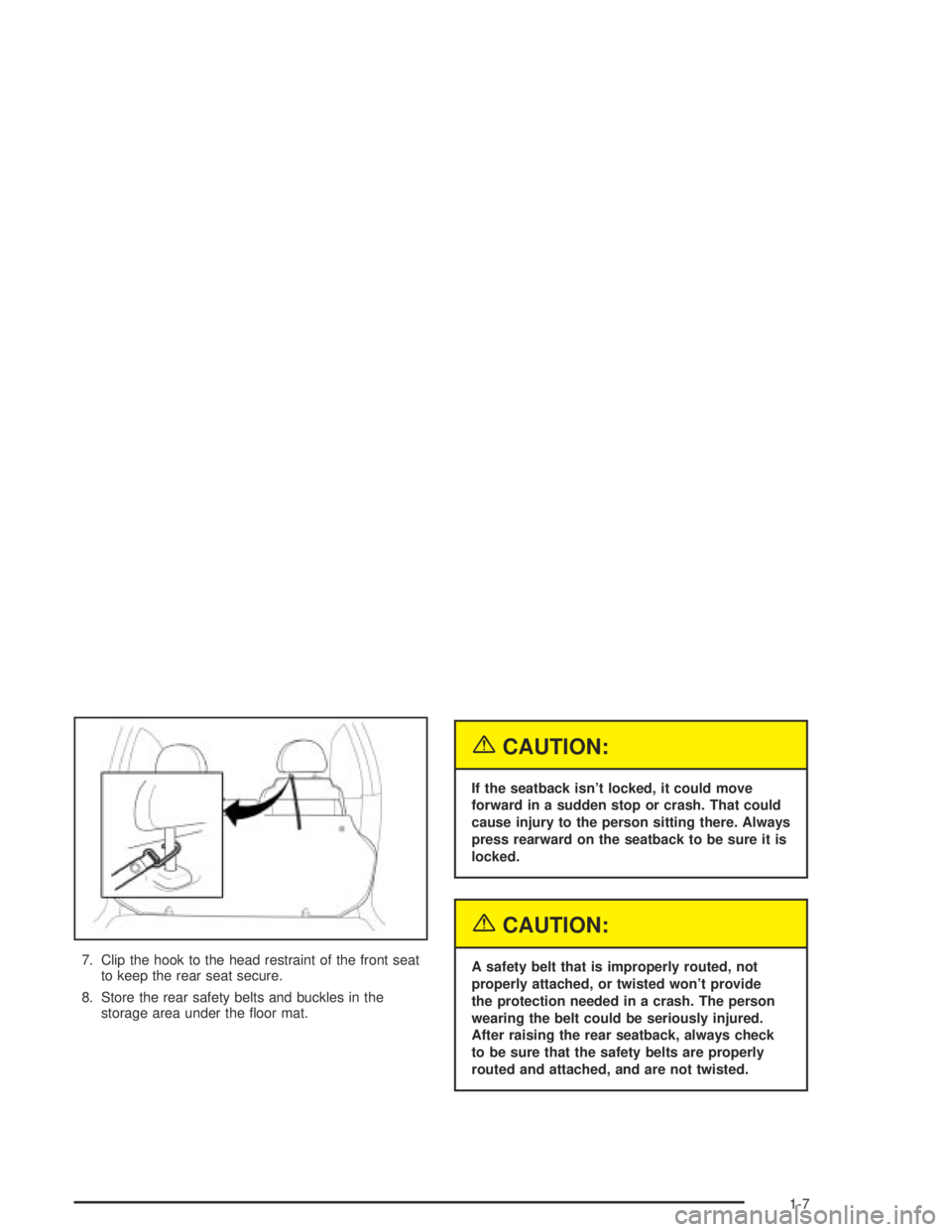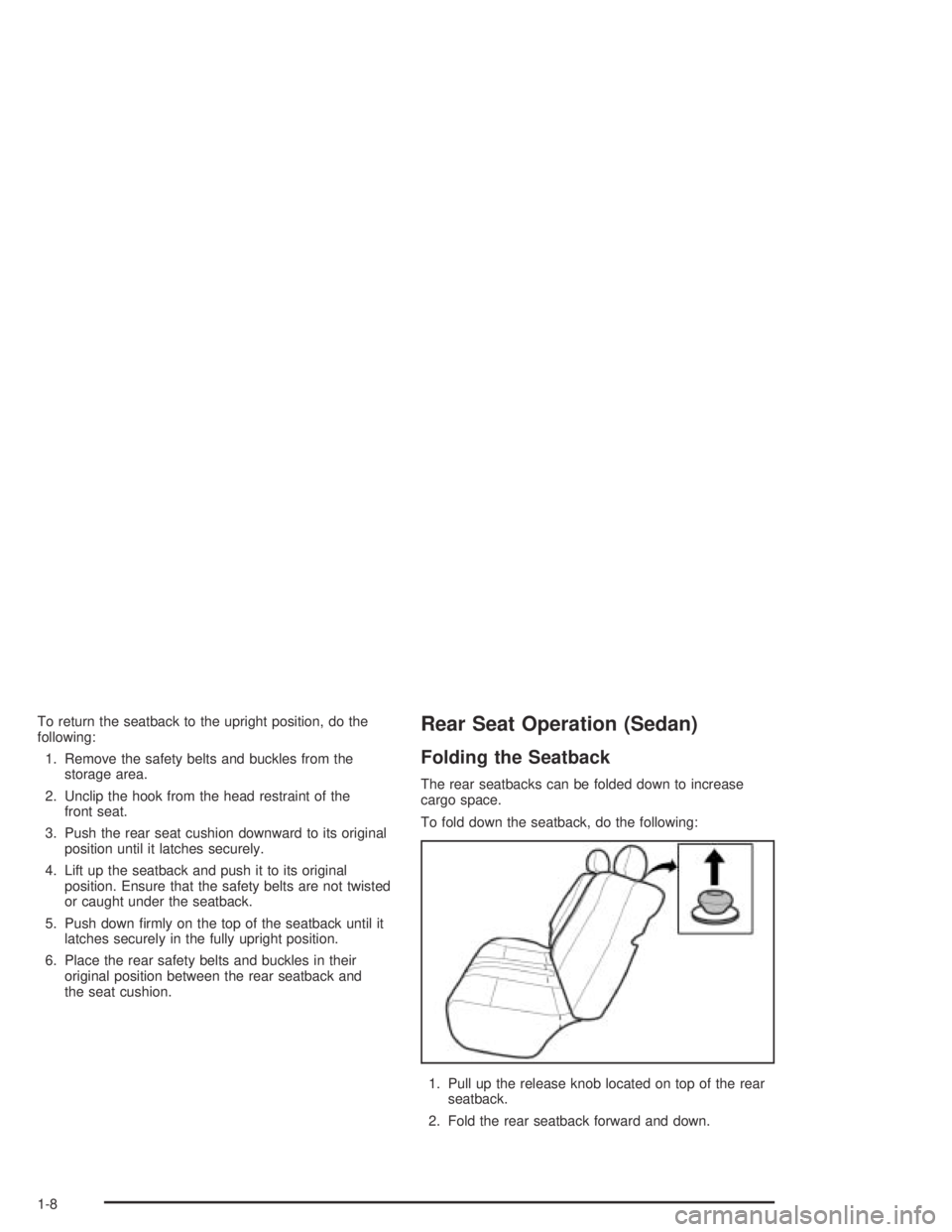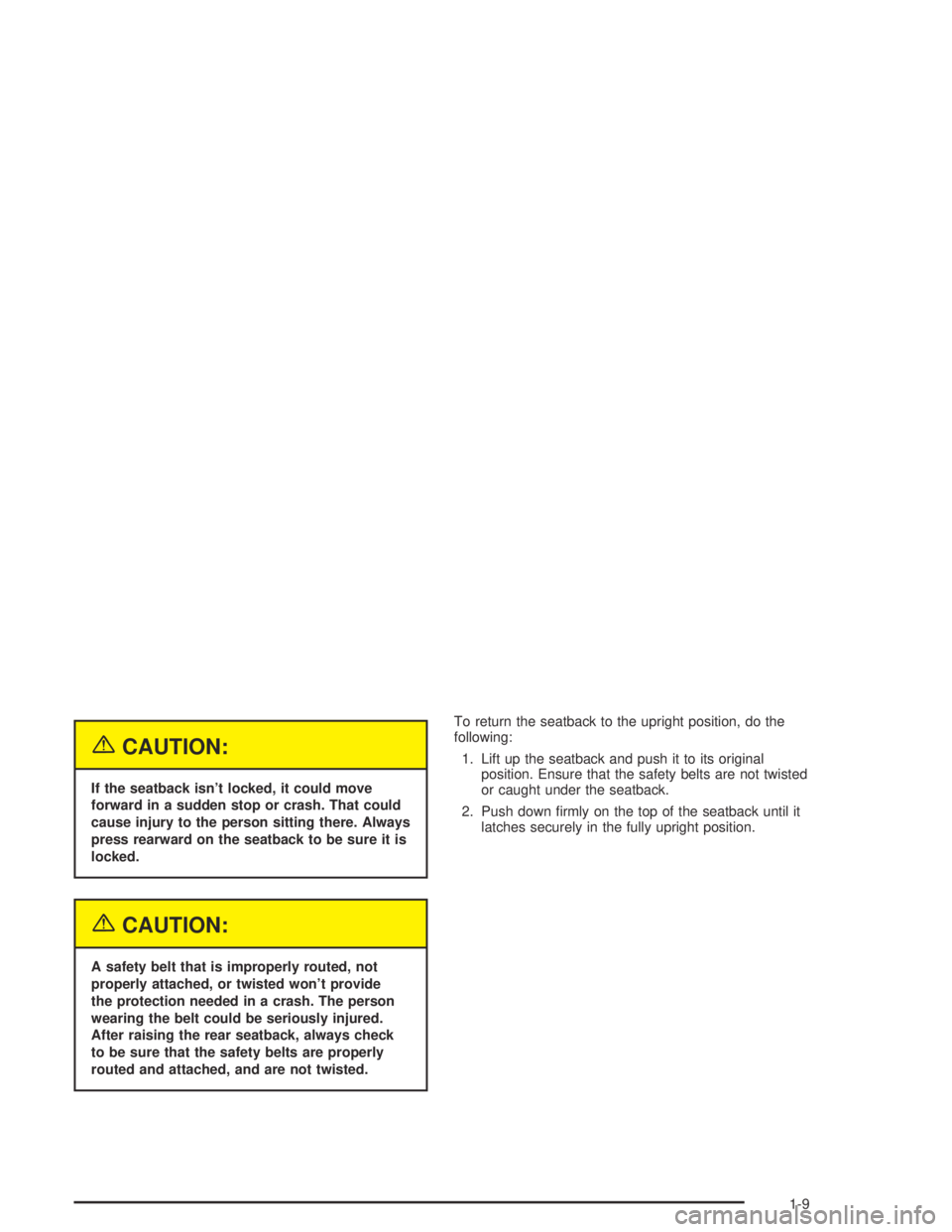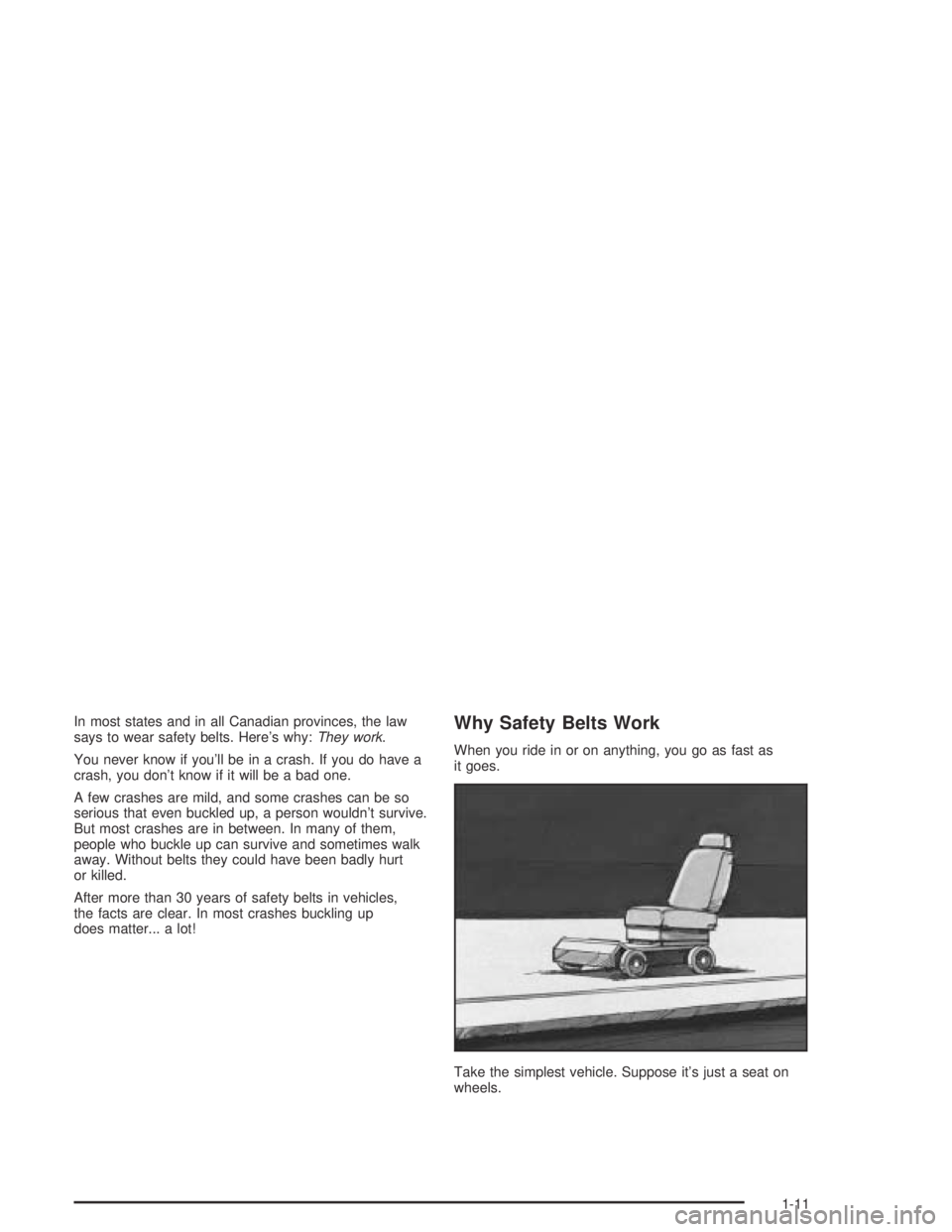CHEVROLET AVEO 2002 Service Repair Manual
AVEO 2002
CHEVROLET
CHEVROLET
https://www.carmanualsonline.info/img/24/56853/w960_56853-0.png
CHEVROLET AVEO 2002 Service Repair Manual
Trending: windshield wipers, tow bar, brake light, brake fluid, service interval, radio antenna, engine oil capacity
Page 1451 of 5127
Front Seats
Manual Seats
{CAUTION:
You can lose control of the vehicle if you try to
adjust a manual driver’s seat while the vehicle
is moving. The sudden movement could startle
and confuse you, or make you push a pedal
when you don’t want to. Adjust the driver’s
seat only when the vehicle is not moving.Pull up and hold the bar
located under the front of
the seat to unlock it.
Slide the seat to where you want it and release the bar.
Then try to move the seat with your body, to make
sure the seat is locked into place.
1-2
Page 1452 of 5127
Driver Seat Height Adjuster
To adjust the height of
the driver’s seat cushion,
turn the knob located
on the outboard side of the
seat cushion.
Turn the knob forward to raise the height of the seat
cushion and rearward to lower it.
Reclining Seatbacks
To adjust the seatback, pull up the lever located on the
outboard side of the seat and move the seatback to
where you want it.
Release the lever and push rearward on the seatback
to make sure it is locked.
1-3
Page 1453 of 5127
But do not have a seatback reclined if your vehicle is
moving.
{CAUTION:
Sitting in a reclined position when your vehicle
is in motion can be dangerous. Even if you
buckle up, your safety belts can’t do their job
when you’re reclined like this.
The shoulder belt can’t do its job because it
won’t be against your body. Instead, it will be
in front of you. In a crash you could go into it,
receiving neck or other injuries.
The lap belt can’t do its job either. In a crash
the belt could go up over your abdomen.
The belt forces would be there, not at your
pelvic bones. This could cause serious internal
injuries.
For proper protection when the vehicle is in
motion, have the seatback upright. Then sit
well back in the seat and wear your safety belt
properly.
1-4
Page 1454 of 5127
Head Restraints
Adjust your head restraint so that the top of the restraint
is closest to the top of your head. This position reduces
the chances of a neck injury in a crash.
Pull up the head restraint in order to adjust the position
upward.Push in the release button and press down on the head
restraint in order to adjust the position downward.
To remove the head restraint, pull the head restraint all
the way up. Then push in the release button and lift
the head restraint from the guide sleeve.
Replace the head restraint and reset it in the original
position before driving.
Your vehicle may have adjustable rear seat head
restraints. Push in the release button and move the
head restraint to the desired position.
1-5
Page 1455 of 5127
Rear Seats
Rear Seat Operation (Hatchback)
Folding the Seatback
The rear seatbacks can be folded down to increase
cargo space.
To fold down the seatback, do the following:
1. If your vehicle has adjustable head restraints,
push the head restraints down all the way.
2. Pull up the release knob located on top of the rear
seatback.3. Fold the rear seatback forward and down.
4. Move the safety belts and safety belt buckles out of
the space between the seatback and the seatback
cushion.
5. Pull the release handles on the rear side of the seat
cushion to unlock the rear seat cushion.
6. Lift and fold up the seat.
1-6
Page 1456 of 5127
7. Clip the hook to the head restraint of the front seat
to keep the rear seat secure.
8. Store the rear safety belts and buckles in the
storage area under the floor mat.
{CAUTION:
If the seatback isn’t locked, it could move
forward in a sudden stop or crash. That could
cause injury to the person sitting there. Always
press rearward on the seatback to be sure it is
locked.
{CAUTION:
A safety belt that is improperly routed, not
properly attached, or twisted won’t provide
the protection needed in a crash. The person
wearing the belt could be seriously injured.
After raising the rear seatback, always check
to be sure that the safety belts are properly
routed and attached, and are not twisted.
1-7
Page 1457 of 5127
To return the seatback to the upright position, do the
following:
1. Remove the safety belts and buckles from the
storage area.
2. Unclip the hook from the head restraint of the
front seat.
3. Push the rear seat cushion downward to its original
position until it latches securely.
4. Lift up the seatback and push it to its original
position. Ensure that the safety belts are not twisted
or caught under the seatback.
5. Push down firmly on the top of the seatback until it
latches securely in the fully upright position.
6. Place the rear safety belts and buckles in their
original position between the rear seatback and
the seat cushion.Rear Seat Operation (Sedan)
Folding the Seatback
The rear seatbacks can be folded down to increase
cargo space.
To fold down the seatback, do the following:
1. Pull up the release knob located on top of the rear
seatback.
2. Fold the rear seatback forward and down.
1-8
Page 1458 of 5127
{CAUTION:
If the seatback isn’t locked, it could move
forward in a sudden stop or crash. That could
cause injury to the person sitting there. Always
press rearward on the seatback to be sure it is
locked.
{CAUTION:
A safety belt that is improperly routed, not
properly attached, or twisted won’t provide
the protection needed in a crash. The person
wearing the belt could be seriously injured.
After raising the rear seatback, always check
to be sure that the safety belts are properly
routed and attached, and are not twisted.To return the seatback to the upright position, do the
following:
1. Lift up the seatback and push it to its original
position. Ensure that the safety belts are not twisted
or caught under the seatback.
2. Push down firmly on the top of the seatback until it
latches securely in the fully upright position.
1-9
Page 1459 of 5127
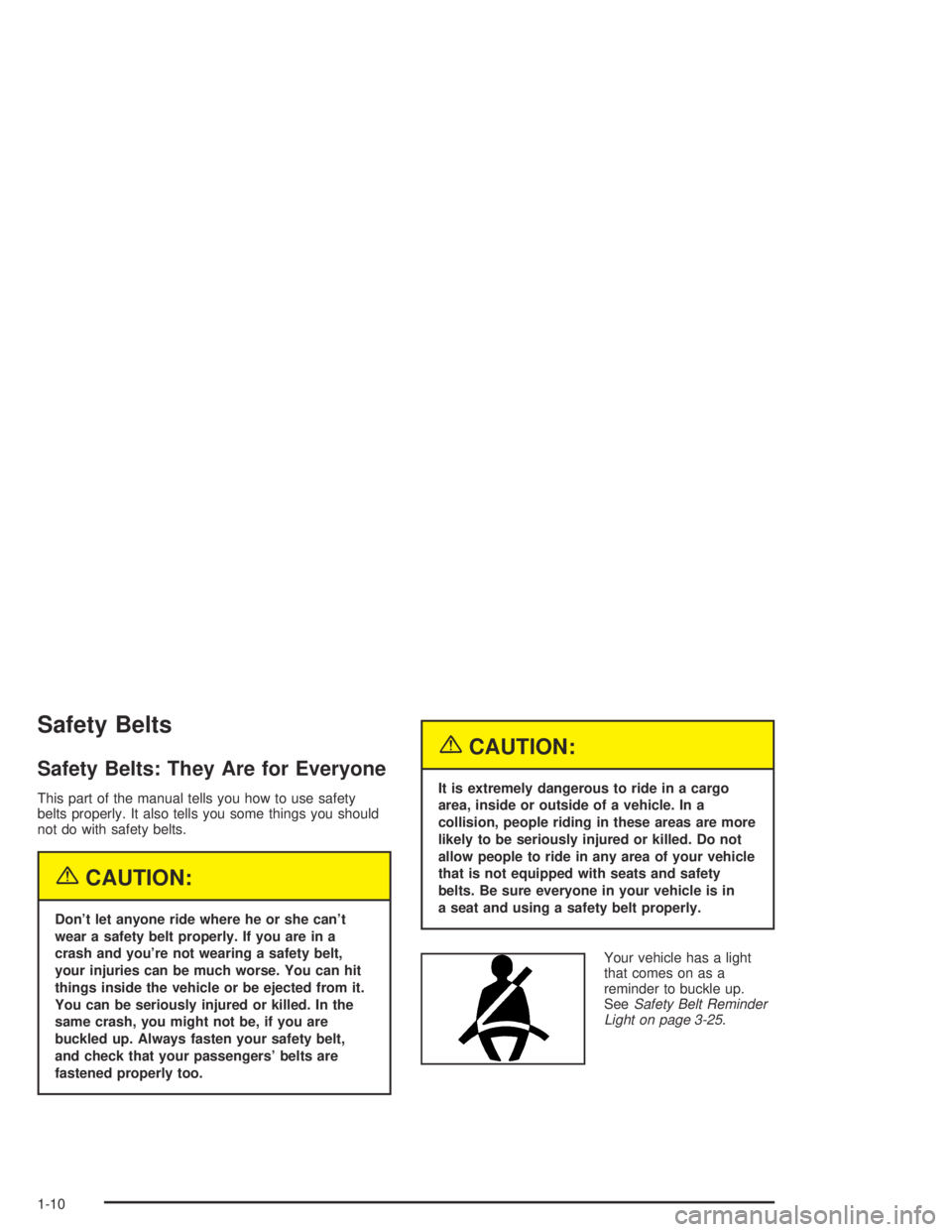
Safety Belts
Safety Belts: They Are for Everyone
This part of the manual tells you how to use safety
belts properly. It also tells you some things you should
not do with safety belts.
{CAUTION:
Don’t let anyone ride where he or she can’t
wear a safety belt properly. If you are in a
crash and you’re not wearing a safety belt,
your injuries can be much worse. You can hit
things inside the vehicle or be ejected from it.
You can be seriously injured or killed. In the
same crash, you might not be, if you are
buckled up. Always fasten your safety belt,
and check that your passengers’ belts are
fastened properly too.
{CAUTION:
It is extremely dangerous to ride in a cargo
area, inside or outside of a vehicle. In a
collision, people riding in these areas are more
likely to be seriously injured or killed. Do not
allow people to ride in any area of your vehicle
that is not equipped with seats and safety
belts. Be sure everyone in your vehicle is in
a seat and using a safety belt properly.
Your vehicle has a light
that comes on as a
reminder to buckle up.
SeeSafety Belt Reminder
Light on page 3-25.
1-10
Page 1460 of 5127
In most states and in all Canadian provinces, the law
says to wear safety belts. Here’s why:They work.
You never know if you’ll be in a crash. If you do have a
crash, you don’t know if it will be a bad one.
A few crashes are mild, and some crashes can be so
serious that even buckled up, a person wouldn’t survive.
But most crashes are in between. In many of them,
people who buckle up can survive and sometimes walk
away. Without belts they could have been badly hurt
or killed.
After more than 30 years of safety belts in vehicles,
the facts are clear. In most crashes buckling up
does matter... a lot!Why Safety Belts Work
When you ride in or on anything, you go as fast as
it goes.
Take the simplest vehicle. Suppose it’s just a seat on
wheels.
1-11
Trending: tires, reset sun roof, automatic transmission fluid, spark plugs, stop start, instrument cluster, child seat
